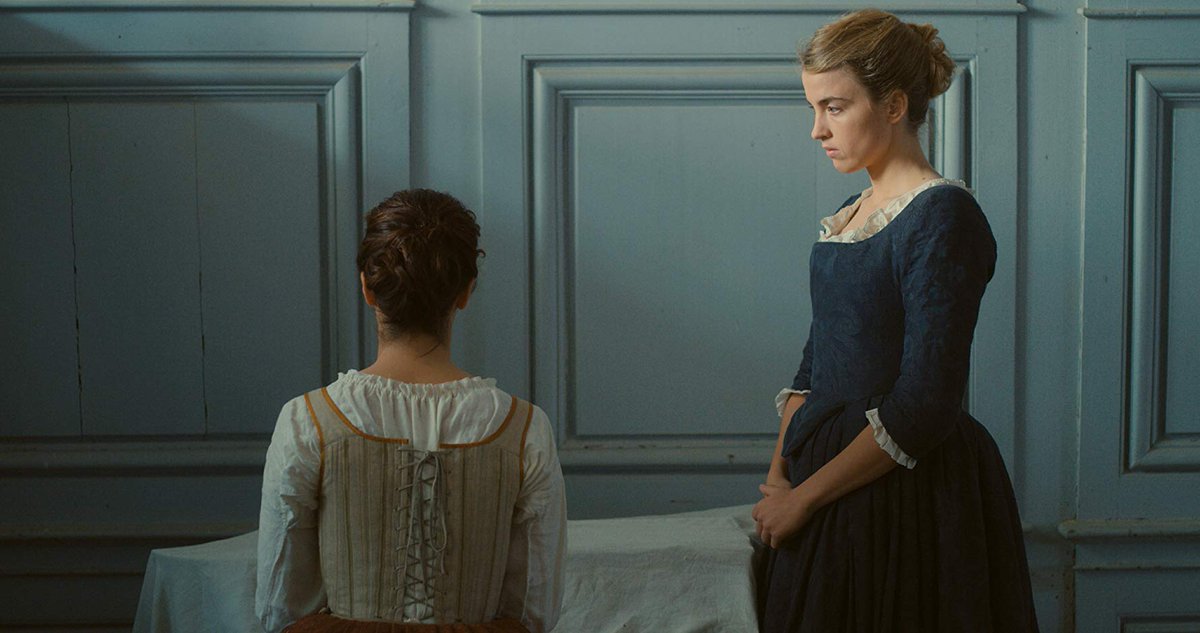
“‘Tis better to have loved and lost than never to have loved at all.” is a famous quotation about the perils of love lost, but is really true? Loving someone deeply but being unable to have them can be a pain that one never really ever gets over, particularly when the union’s failure is no fault of your own. This conundrum is one that has been explored in film throughout its existence and one of the most talked about features this year covers this ground once again. Portrait of a Lady on Fire transports us to 1770 where a young artist named Marianne (Noémie Merlant) is commissioned by a French countess (Valeria Golino) to paint the wedding portrait of her young daughter Héloïse (Adèle Haenel) following previous attempts that resulted in unsatisfactory work. Marianne is left to try to break the prickly exterior of Héloïse in order to find the inspiration to complete her work and in the process, begins to fall in love with her subject. As the two embark on their romance, the doomed fate of their union lurks ever closer in the background.
Portrait of a Lady on Fire is an intense look at the torturous effect on one’s emotions when they fall in love with a person but are unable to embark on a life together due to circumstances outside of their control. The story of their doomed love affair is a classic one in cinema from Brief Encounter to Disobedience and in fiction itself dating all the way back to Ancient Greece with the story of Orpheus and Eurydice, which this film references directly. It is this rich history from which Portrait of a Lady on Fire draws inspiration and, unfortunately, what prevents the film from rising above being a rote retelling of a story and theme we’ve already seen before. As the praise for it reaches a fever pitch, I’m left wondering what sets the film apart from 2017’s Disobedience, which also explores a same sex love affair doomed by sociological conventions but with the added depth of the exploration of the role religion plays in stifling human behaviors and desire. While well-made and well-acted, Portrait of a Lady on Fire doesn’t add anything unique to itself that sets it apart from not only what we’ve seen from this trope historically, but what we’ve been treated to in theaters recently.
Despite the unoriginality of its story, Portrait of a Lady on Fire is an otherwise well executed film, both in terms of its technical aspects and the performances from its actors. Director Céline Sciamma and director of photography Claire Mathon imbue the film with visuals that call to mind rich, landscape oil paintings much like the ones Marianne must have created throughout her lifetime. It’s portrayal of the French countryside and the costume design of 18th century France make Portrait of a Lady on Fire such a joy to look at. In addition to the scenery offered, the way that its stars Haenel and Merlant glow onscreen is a testament to the gaffer, key grips, and best boys on set. The way the lighting highlights their faces and accentuates the production design is actually pretty noticeable here and enhances the cinematography overall.
Haenel and Merlant are called to do most of the film’s heavy lifting in terms of acting and their chemistry allows for the duo to stick the landing completely. Marianne and Héloïse’s gradually falling in love is entirely believable here, partly due to how well Adèle Haenel and Noémie Merlant portray the underlying sexual curiosity and tension between the two leading up to the point where they finally act upon their feelings. As a 90s kid, I was also pleased to see Hot Shots actress Valeria Golino onscreen. While she has just a small supporting role here, which she performs well in, my nostalgia bone was tickled just enough when I realized this figure from my childhood had showed up once more. Even though it contains a multitude of positive elements, the fact that Portrait of a Lady on Fire presents nothing new or different in its story of doomed love prevents it from elevating past a gorgeously shot and capably acted rehash. Audience members unfamiliar with this particular form of love story may be moved more than those who are more well-versed, but for those who have seen these types of stories before, you may leave feeling a bit of pointless déjà vu.
Image: NEON

